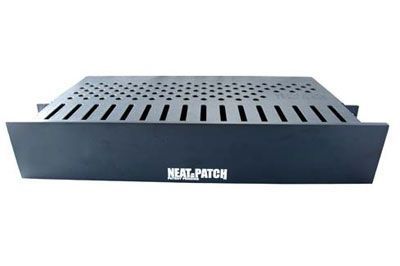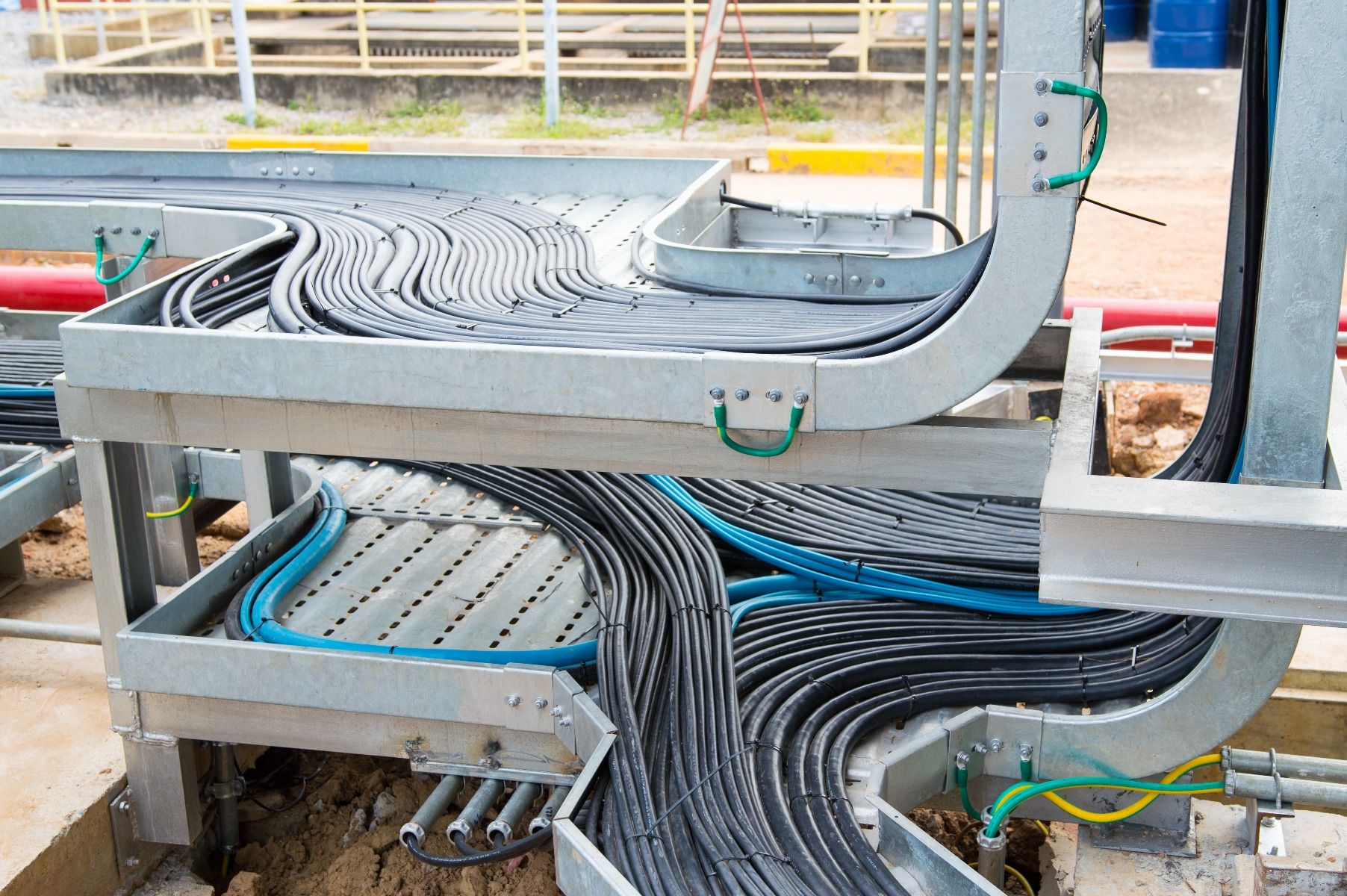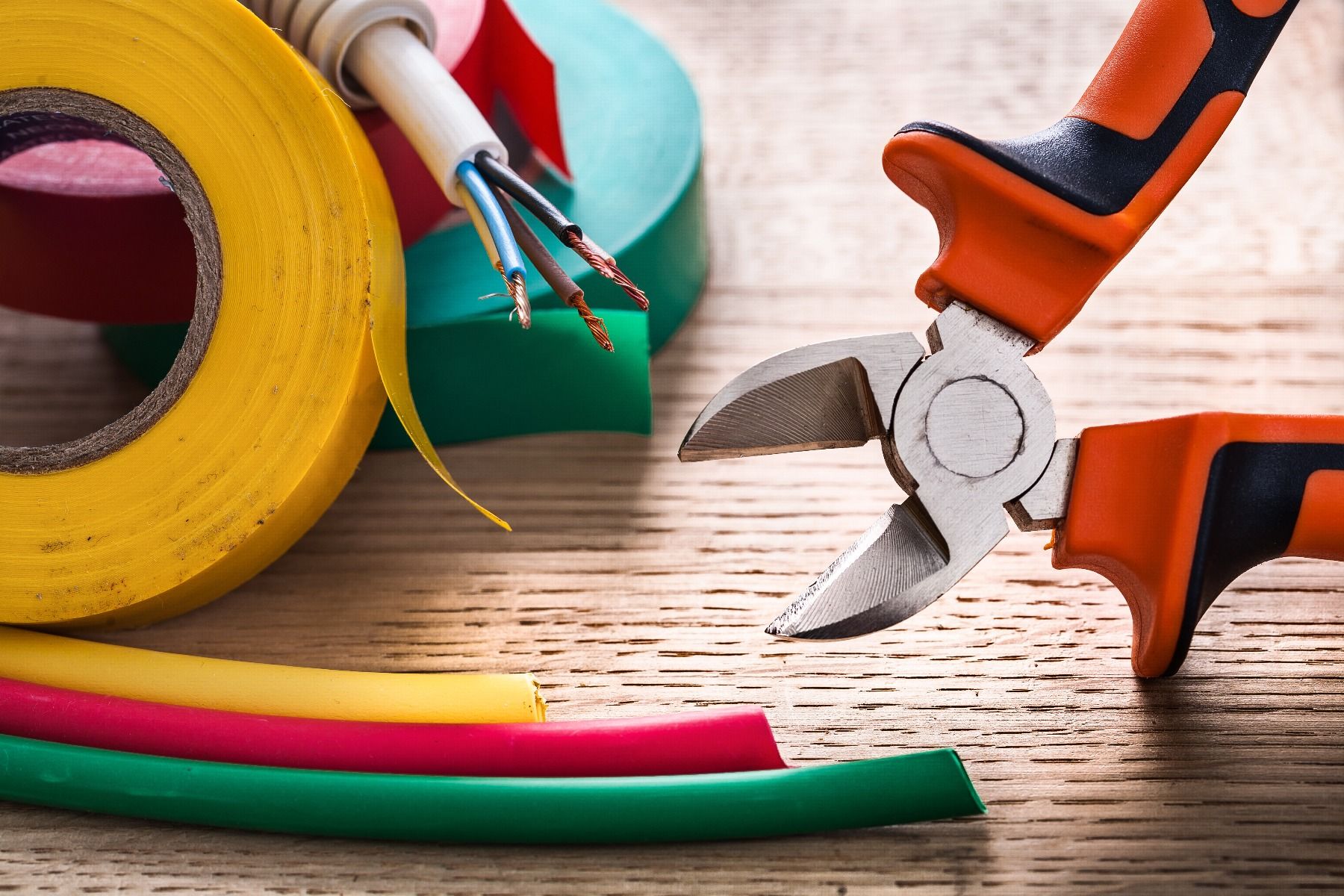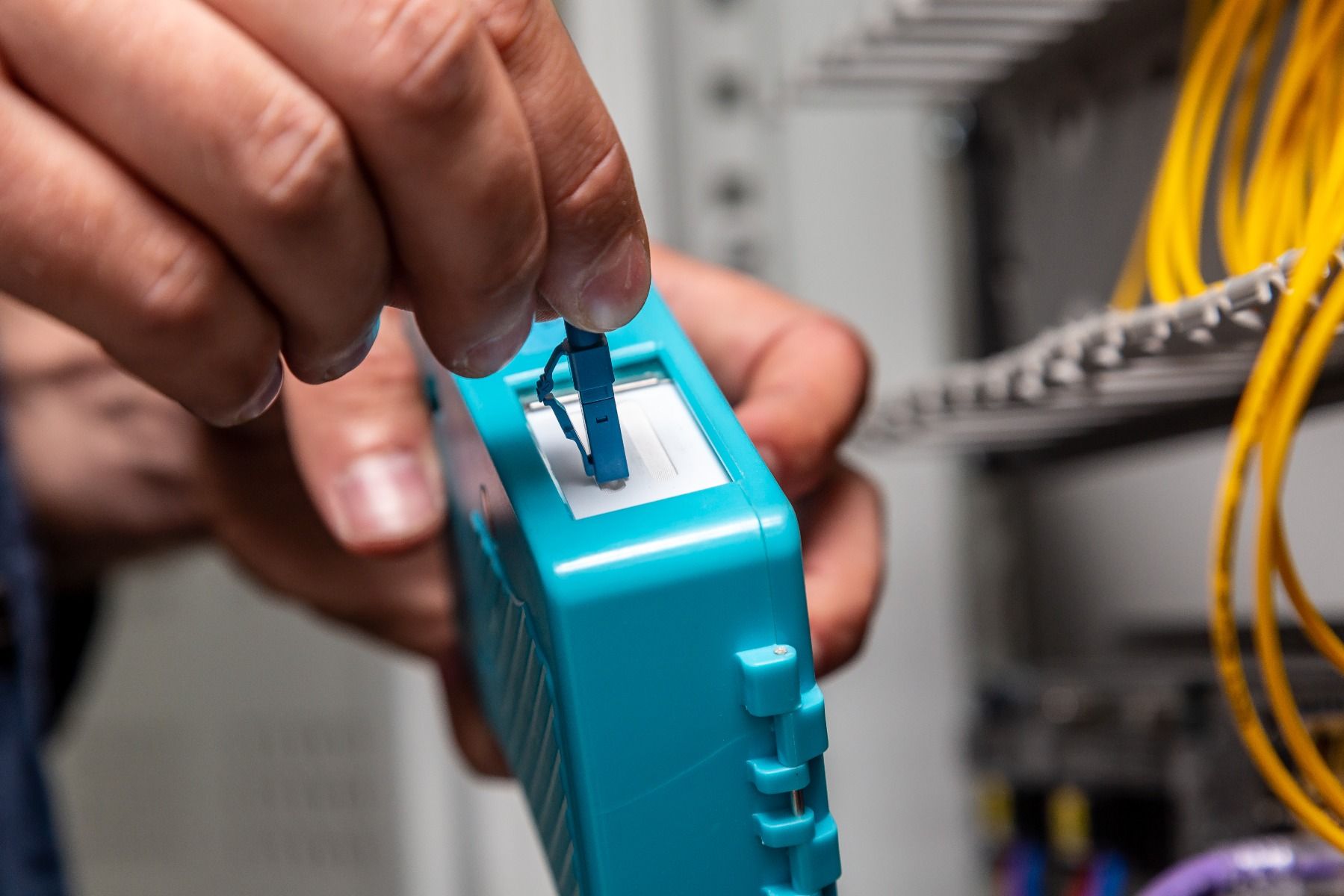Blog
-
Posted: September 23, 2021Read more »

We’ve all seen the equipment rack or IT closet that lacks cable management. Confusion reigns, as masses of wires run in all directions and every patch bay looks like a rat’s nest. You feel sorry for whoever must go in and install or re-route cables or troubleshoot wiring problems.
The good news is that wire routing is a universal challenge, so there are products to tame the cable confusion. In fact, there are hundreds of cable management items to choose from, so let’s simplify things. Most of them can be divided into three groups: rack and cabinet attachments, cable routers along walls and ceilings, and ties and straps for bundling.
Rack and Cabinet Attachments
A well-organized equipment rack or cabinet usually has a few attachments for ordered cable routing. We touch on a few of the most popular devices here.
A cable manager is a housing that mounts either inside or just outside of a rack to hold and direct cables. A horizontal manager mounts inside, taking up one or two RUs (rack units). Some have built-in D-rings (distribution rings) to secure cables. For more permanent installations, another type of horizontal manager uses cable trays with finger ducts to direct cables. A particularly innovative tray for taming patch cables on the front of a rack is the two-RU Neat-Patch Cable Management Bay.
Vertical managers are designed for cables that need to run the length of a rack or cabinet. The openings are fairly large, and each opening is able to accommodate a sizeable number of Ethernet cables. One t
-
Posted: May 25, 2021Read more »

The effort to slim down isn’t always just a fitness goal. It can also be geared towards slimming down your home office and personal space. Getting rid of thick and unruly cables can help add both workspace and headspace to a create a more productive environment. Let’s run through some common networking and entertainment cables that have taken their “slim down challenge” to heart.
Ultra Slim HDMI Cables
These HDMI cables are made using 32AWG conductors, roughly 75 percent smaller than a standard HDMI cable. This makes them much easier to bend and maneuver behind tight spaces, small openings, and odd corners. They’re also great as a compact cable solution for on-the-go video playback for cameras and cell phones.
Slim 3.5mm Audio Cables
The most important part of these cables is the slimmed down 3.5mm molded connection itself. It’s slim enough to plug into 3.5mm jacks on smartphones and tablets without having to remove the protective case around these devices. This is a huge advantage when wanting to keep your expensive tablet or smartphone safe and secure in the case without having to remove it to connect to headphones or speakers.
Slim Cat6/Cat6a Patch Cables
Installers and IT teams use these cables to help reduce space, improve airflow, and provide
-
Posted: May 21, 2021Read more »

When you’re charging a phone or tablet you typically don’t need to go too far. Cables ranging from 3ft to 6ft get the job done at a comfortable length. But when the printer is on one side of the room and your desktop is on the other…you may run into some problems finding a reliable cable to go the distance.
Run of the mill “passive” USB cables have a distance limitation of 16.4 feet, or 5 meters, which poses a problem if you don’t have the flexibility to move your devices and peripheral equipment closer to your central workstation. This distance is a specific length, so most passive USB cables you’ll find will top out at 15ft, and there is no way to daisy chain multiple passive USB cables to surpass this limitation.
Fortunately, there are a variety of “active” cables and USB extenders to help overcome this distance limitation and prevent a total overhaul of your workspace to stay connected.
Active USB Extensions
These cables are built with an internal “booster” to transmit USB signal beyond the 15ft limitation. Most active USB extension cables fall in the range of 16ft-80ft. At this range they can be BUS powered, so there is no need for an additional power cable, which is great for plug-and-play applications or in areas where you don’t have plug-in access for an external power cable.
Active USB extensions also come in a plenum jacket rating for more permanent installations that may need to run within walls and through plenum air spaces without the need for conduit.
USB Extenders
When an 80ft run with an active USB extension cable still won’t go the distance, USB extender baluns utilize the much further distance capacities of ethernet cables (specifically Cat5e and Cat6) to extend USB signals 150ft-200ft. These extender baluns are also plug and play and BUS powered, so it’s a quick and cost-effective way to surpass even the 80ft distance limitation of most active USB cables.
-
Posted: May 11, 2021Read more »

Tray cable is a multipurpose and multiconductor cabling used in industrial power/control, communications systems, traffic control, switching, lighting, and signal transmission. You will find tray cable installed in conduits, ducts, raceways, and cable tray systems. Tray cable jackets are resistant to fire (such as fire alarm cable), UV, chemicals, and oil. This ability to withstand unforgiving environments makes them ideal for wiring mission-critical machinery and systems.
What are the types of tray cable?
Two main classifications of tray cable are Power Limited Tray Cable (PLTC) and Vinyl Nylon Tray Cable (VNTC). Let us run through some of their key features.
Power Limited Tray Cable:
- 300 volt rating
- Flame Retardant/UV Resistant PVC jacket
- 105 Degree Celsius operating temperature
- Approved for Class I and II, Division 2 Hazardous environments
- Industrial control, burglar alarms, point of sale systems, intercom
Vinyl Nylon Tray Cable:
- 600 volt rating
- Flame Retardant/UV Resistant/Burial Rated PVC Jacket
- 194 Degrees Celsius (dry) and 167 degrees Celsius (wet)
- Telemetering, power/control, traffic control, lighting, and signal transmission
- Approved for Class I and II, Division 2 Hazardous environments
What overall jacket material is used in tray cable?
Typically tray cable jackets are made up of Polyvinyl Chloride (PVC), Chlorinated Polyethylene (CPE), and Low Smoke Zero Halogen (LSZH). The most common overall jacket is PVC, which is flame retardant sunlight resistant per UL 1277.
-
Posted: May 10, 2021Read more »

Heat shrink tubing is an inexpensive means of protecting wires from any number of environmental factors which can potentially damage or interfere with the operation of the cable. Not only does heat shrink tubing provide a buffer against abrasion, liquids, and changes in temperature/humidity, it’s also a cost-effective means for cable organization and color-coding identification.
Let’s highlight some of the advantages of using heat shrink tubing to better understand how it improves reliability and maintenance of cables and just how valuable it is in your cable runs and builds.
Size and Color Customization
Depending on the vendor and manufacturer heat shrink tubing is measured in millimeters or inches based on the pre-shrink diameter of the tubing. At Show Me Cables, we list our heat shrink tubing in inches and carry 1/16, 3/32, 1/8, 3/16, ¼, 3/8,
-
Posted: April 16, 2021Read more »

Ahead of the Curve: 8K HDMI Cables have Landed
Not sure if you’ve heard, but we’re incredibly excited to start carrying 8K rated HDMI cables. The number of customers asking for 2.1 rated HDMI cables had increased enough to where it was a bit of a bummer to explain how our standard HDMI cables exceeded 2.0 ratings (supports 4K, HDR, and 3D), but didn’t fit the bill when it came to supporting the bandwidth necessary for 8K resolution.
At the start of this year, our new line of ECore Ultra High-Speed HDMI AV cables are locked and loaded to handle the bandwidth needed to send uncompressed 8K video at 60 frames per second, or uncompressed 4K at 120 frames per second. They’ve also got the juice to handle 48-bit deep color, 3D video, built-in ethernet, and a 90-degree bend radius (perfect for tight fits behind entertainment cabinets or mounted TVs).
That fancy new 8K television is only as good as the cabling. It is 100 percent necessary to have 2.1 rated HDMI cables to reap the full viewing benefits of owning an 8K television. With that said, I think it’s important to be realistic about what 8K means today and what it will mean tomorrow.
As it stands, there is virtually no content readily available in 8K. There are no major streaming services supporting it, there are no 8K programs (in the United States) on broadcast, cable, or satellite, and there is not currently a physical media means of watching 8K discs or any other tangible media.
It is a bit of a waiting game to allow these services
-
Posted: April 09, 2021Read more »
Patch Panel Refresh
-
Posted: March 31, 2021Read more »
Clean Fiber, Happy Fiber

It only takes microscopic dust and oil particles on the end-faces of fiber optic cables to cause major data loss, or outright fiber link failure. These contaminants are impossible to see with the naked eye but can easily accumulate and be distributed from mating and de-mating soiled plugs. Even brand-new fiber optic connectors straight out the package are susceptible to particulates from those handling the connections before they arrive on site.
Regular inspection and cleaning are the only way to ensure reliable fiber optic connection without running the risk of degradation of fiber optic connectors, data loss, or fiber link failure.
Here are some easy to use fiber optic cleaners that can efficiently remove dirt, oil, and debris from end-face connectors.
Fiber Optic Smart Cleaner Mini
The fiber optic cleaners are the solution for technicians maintaining connectivity with a high volume of connectors. An extendable tip provides accessibility to recessed connectors and the 180-degree rotation engages a full sweep of the connector. A removeable end cap allows you to clean both in-adapter and unmated connectors. This is a dry cleaner, but it is made up of anti-static material, so you won’t create a static charge from the dry wiping after the connector is cleaned. The initial cartridge is good for 400 plus cleanings and can be replaced with a fresh cartridge.
Fiber Optic Cleaner Cassette
The cassette s
-
Posted: March 08, 2021Read more »

If you’ve paid any attention to commercial advertising put out by telecommunications companies within the last year, you’ll notice “5G” is the hot button buzzword. So popular, in fact, that American-Canadian actor Ryan Reynolds is featured in a 30-second clip attempting to explain it with the help of a technology expert…Ryan still doesn’t quite grasp it.
In a nutshell 5G is the fifth-generation mobile network and the goal is to create a massive network connecting machines, objects, and devices. To do so, this network must deliver increased data speeds, extremely low latency, and more reliability across the board. For those in the industry, the successful deployment and utilization of 5G means positive impacts in transportation, healthcare, agriculture, manufacturing, and even everyday consumer experiences on mobile networks.
In the long run this will be a major driver to economic growth across the entire world. By impacting and enhancing mobile broadband services, mission-critical communications, and the Internet of Things (IoT) there is the potential for 5G to make a difference in just about every facet of human life that relies on data connectivity.
In the short run we’re a little way off from experiencing the wide-spread utopian effects of this upgraded generation in wireless technology, but most of the groundwork has been laid and only time will tell whether the roll-out and deployment of 5G will live up to its endgame promise.
5G is more so an investment in our future. This delayed reaction and full force feel is only natural in the industry. It took 4G almost 2-3 years to have an influence on how we connect with one another. First appearing on phones in 2010, it wasn’t until
-
Posted: September 08, 2020Read more »
Slim Down: The Patch Cable Diet
It’s easy for the once-cavernous space of a data center to turn cramped and congested. The space isn’t growing, but the equipment and need for connectivity is. The solution? Slim Cat6 patch cables to help reduce space, improve airflow, and provide easier management in a bustling data center.
Reduce Space
Cat6 Slim Ethernet patch cables have done their share of diet and exercise, going from 24AWG on standard Cat6 cables down to 28AWG. In terms of overall diameter, that is a physical slim down from 5.3mm OD to 3.5mm OD.
Easier to Manage
Compared to standard Cat6 these slim patch cables are easier to handle and route from switch-to-server links in high-density data centers. Decreased overall diameter means increased flexibility. Running patch cables around corners, in crowded racks/closets, and through panels just got much easier. With the space saved it switching to slim, it also helps in providing a clear line of sight to identify ports on patch panels.
Increased Airflow
Smaller cable diameter equates to more airflow and better ventilation in racks and cabinets. This decongestion helps with equipment cooling in racks and server rooms and helps overall maintenance of hardworking networks.
If your data center could use some room to breathe, consider our E-Core Cat

